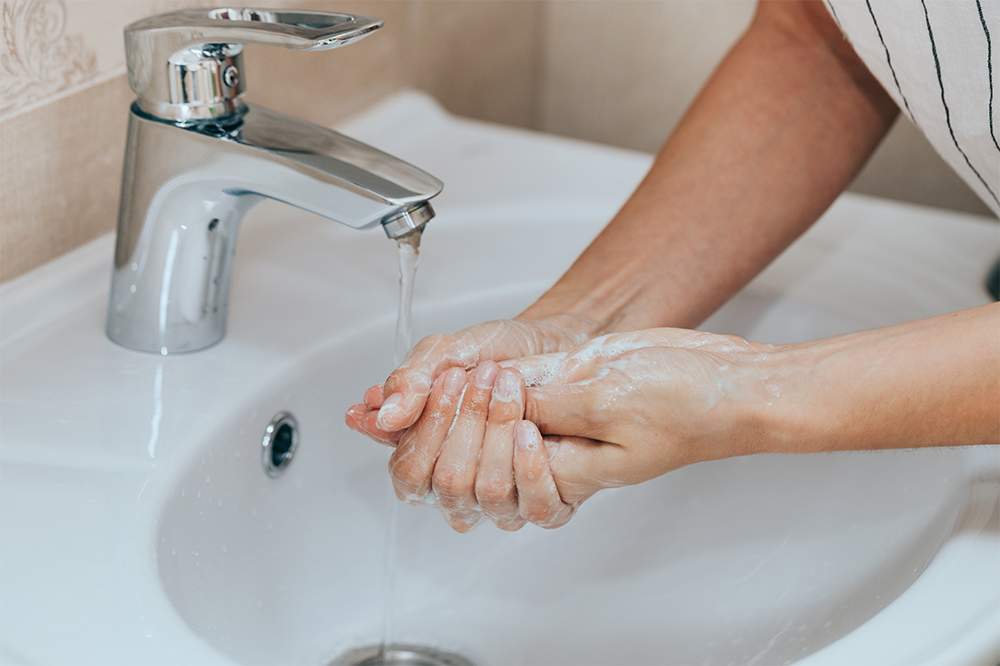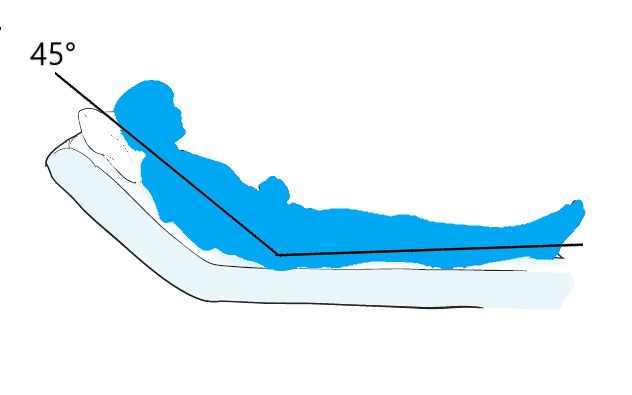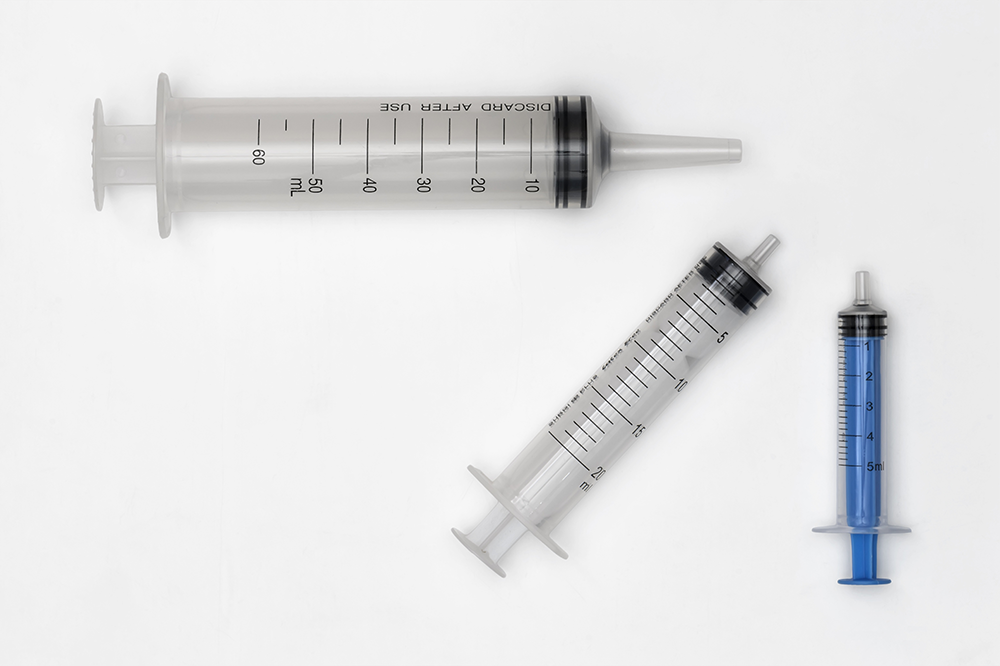
Quick Summary:
This guide walks you through setting up your enteral feeding pump, starting feeding, and causes and solutions for common feeding problems. You will also learn the importance of flushing tubes and feeding in the proper position.
Click a link to jump to the section.
Enteral Feeding at Home
Transitioning to home enteral feeding can be challenging, but it allows you to get accustomed to the process in a familiar and comfortable environment. Enteral feeding pumps simplify the process, ensuring higher accuracy and preventing malnutrition1 for those who cannot feed orally. With this guide, you can learn the basics of enteral feeding and how to troubleshoot common problems.
Setting Up the Pump for Feeding
Gather enteral feeding supplies on a clean surface. You will need:
- Enteral feeding pump
- Pump set (feeding bag and tubing)
- The formula prescribed by your doctor
- 60 mL syringe and lukewarm water for flushing tubes
- IV pole or pump backpack
- Wash your hands thoroughly with warm water.
- Flush tubing to ensure tubes are clear and clean.
- Let refrigerated formula stand for 30 minutes to warm to room temperature.
- Double-check the expiration dates on your formula before feeding2.
- If the formula is in a refrigerated container that has been open for more than 24 hours, discard it and get a new container. Formulas left at room temperature for more than 8 hours should also be discarded.
- Shake well and wipe off the top of the container with a clean, damp cloth or paper towel before opening.
- Fill the feeding bag with the recommended amount of formula3.
- Connect the feeding set to the pump according to manufacturer instructions.
- If using an IV stand, hang the feeding bag. When hanging, the bottom of the feeding bag should be at least 18 inches above the pump.


Starting Pump Feeding
- Sit upright or lie with your head elevated to at least 45 degrees.
- Power on the pump and program the pump with the prescribed flow rate.
- Most pumps have a priming feature for clearing air pockets; run this mode before feeding.
- Uncap your feeding tube or tube extension.
- Connect the pump set tubing to your feeding tube or extension.
- If applicable, open the clamp on the pump set.
- Start the feeding program on your pump.
- When feeding is completed, recap your feeding tube.
- Flush the tubing again to prevent clogging and obstructions.
- Stay in the same position (elevated to at least 45 degrees) for 30 to 60 minutes after feeding to help prevent aspiration and aid digestion.
Proper Feeding Position
Feeding in the proper position is vital for preventing aspiration (inhaling liquid into the lungs and airway) and other issues. It is generally recommended to sit comfortably in an upright position during your feeding; if it's not possible to sit upright, you can lie down with your head elevated to a 45-degree angle6.
Maintain this position for 30 to 60 minutes after the feeding. This helps prevent aspiration and aids the digestion process. You and/or your caregiver should monitor for signs of aspiration before, during, and after feedings.


General Safety Tips for Enteral Feeding
- Replace your feeding bag every 1-2 days4.
- Use a new syringe for flushing every 1-2 days.
- Flush tubes before and after each feeding to prevent clogging. Flush every 4 hours for continuous feedings.
- Wipe the pump with a clean, damp cloth before connecting feeding sets.
- Rinse feeding sets between feeds. Discard the feeding set every 24 hours (or as per the manufacturer's instructions). Wash in warm, soapy water, rinse thoroughly, and hang to air dry.
Common Causes of Tube Feeding Problems and How To Troubleshoot
Bloating and Stomach Fullness
- Feeding rate is too fast: Take a break for 1-2 hours and try again at a slower rate5.
- Too much water before or after feeding: Ensure you consume the prescribed amount. If you are unsure of how much water you need, speak with your doctor.
Clogged Tube:
- Bent or kinked tube: Check tubing for cracks, twists, or kinks. Straighten out the tubing as much as possible. If clogging or feeding issues persist, the tube may need to be replaced.
- Improper or inconsistent flushing: Tube flushing should be performed regularly to keep tubes clear. If flushing doesn't resolve the issue, contact your doctor; they may recommend cleaning solutions or completely replacing the tube.
- Blocked tube: If there is a blockage that won't release with flushing, do not try to clear it yourself. Contact your doctor for further assistance.


Constipation:
- Not getting enough water from feedings: Consult with your healthcare provider; they may have specific recommendations for how much additional water you should add to your feeding regimen.
- No fiber/not enough fiber content: Ask your doctor or registered nutritionist about changing to a different formula with higher fiber content.
- Low mobility and/or low physical activity: Add light exercise to your everyday routine, such as short walks.
Diarrhea:
- Elevated emotions during feeding: Try to relax during your feeding. Emotions can affect digestion.
- Not washing your hands thoroughly: Ensure you are washing your hands in warm, soapy water for 30 seconds before handling formula and tubing.
- Using a formula that has been open and refrigerated for longer than 24 hours: Even if the formula is refrigerated, it should be discarded after 24 hours. If the formula is left open at room temperature, it should be discarded if it's been open for more than 8 hours.
Nausea and Upset Stomach:
- Lying flat during or immediately after your feeding: Sit upright or lie at a 45-degree angle during the feeding and for 30 to 60 minutes after.
- Feeding is happening too fast: Double-check the directions to ensure you are accurately providing the prescribed flow rate.
- The formula is too cold: When you take the formula out of the fridge, set it aside in a safe place and let it warm to room temperature for 30 minutes before feeding.
- The formula is left open at room temperature for too long: Don't let the formula sit out at room temperature or in the feeding bag longer than the time recommended by your doctor.
When To Call Your Doctor
Call your doctor if you experience any of the following issues:7
- Diarrhea (more than three movements)
- Constipation that lasts longer than 48 hours
- Vomiting
- Sudden weight loss or weight gain
- Bloody or brownish fluid in the tube
- Tight and/or bloated stomach
- Irritated, red, and/or warm skin around the tube site
- Severe stomach pain
Immediately stop feeding and go to the emergency room if you experience aspiration symptoms. Aspiration is when formula or fluid enters the lungs and is generally caused by improper positioning or misplaced feeding tubes. Symptoms of aspiration include:
- Gagging
- Coughing and choking
- Difficulty breathing
- Gurgly, "wet" voice
- Chest pain/heartburn
- Vomiting
- Fever
Feeding issues can also derive from medication side effects or your body may not tolerate the formula. If general troubleshooting doesn't help ease symptoms, speak with your doctor.
Flush Tubes Regularly
Enteral feeding pumps often feature automatic flushing systems to keep tubes clear. However, manually flushing the feeding tube can further help prevent clogging and blockages. You can use drinking water to flush tubes; sterile water is generally recommended only for immunocompromised patients8.
- Fill a clean bowl with lukewarm water7.
- Using a syringe, draw up around 30 - 60 mL of water5 (your doctor will provide specific instructions on the amount you should use).
- Open up the feeding port cap.
- Insert the syringe tip into the feeding port. If there is a clamp on the tube, double-check that it's open.
- Slowly push down the plunger and let the water run through the tube. When done, remove the syringe from the feeding port.
- Recommendations for flushing frequency may vary depending on your feeding rate8. For continuous feedings, it is generally recommended to flush tubes every 4 hours, and before and after for intermittent feedings.


Cleaning Enteral Pumps
Keeping your pump clean helps prevent cross-contamination and bacterial buildup. Regularly clean the exterior of your pump by wiping it clean with a damp cloth. Some pumps are designed to be rinsed gently under running water - however, instructions may vary depending on the model you own. Always check the user manual for specific care and cleaning instructions.
Be Prepared for Emergencies
When you rely on enteral feeding, it is vital to keep emergency backup supplies on hand. Your emergency supply should include:9
- At least a three-day supply of formula
- Three days' supply of bottled water
- Emergency gravity-feeding bag
- Extra syringes and flush bags
Conclusion
With the proper maintenance and care, enteral feeding with feeding pumps can be safe, simple, and convenient. Explore the variety of enteral pumps we have available to find the best model for your needs.
Footnotes
- 1 "Fatemeh Babaie, Z. G. (2023, January 2)." Role of enteral feeding pumps in precision enteral nutrition. Artificial Intelligence in Precision Medicine.
- 2 "Provincial Health Services Authority. (2023, August)." Adult diaper size chart: Find the right fit for comfort and confidence. BC Cancer.
- 3 "Intermountain Homecare & Hospice. (2022, September)." Giving an enteral feeding with a joey pump. Intermountain Healthcare.
- 4 "Memorial Sloan Kettering Cancer Center. (2023, August 1)." How to use a pump with your feeding tube.
- 5 "Provincial Health Services Authority. (2023, August)." Tube feeding at home: a guidebook for patients and caregivers. BC Cancer.
- 6 "Cleveland Clinic. (2024, May 1)." What is tube feeding (enteral nutrition)? Cleveland Clinic.
- 7 "Saint Luke’s Health System." Discharge instructions: Flushing your feeding tube.
- 8 "Boullata, J. I., Long Carrera, A., Harvey, L., Hudson, L., McGinnis, C., Wessel, J. J., Bajpai, S., Kinn, T. J., Klang, M. G., Martin, K., Pompeii-Wolfe, C., Wood, A., & Guenter, P. (2017, January)." Aspen Safe Practices for Enteral Nutrition therapy. American Society for Parenteral and Enteral Nutrition (ASPEN).
- 9 "Option Care Health." Emergency preparedness for nutrition support patient.

Login and Registration Form